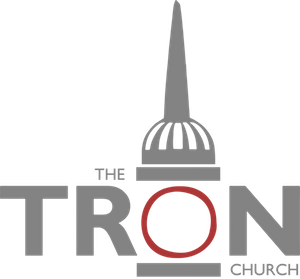The LORD spoke to Moses, saying, "On the first day of the first month you shall erect the tabernacle of the tent of meeting. And you shall put in it the ark of the testimony, and you shall screen the ark with the veil. And you shall bring in the table and arrange it, and you shall bring in the lampstand and set up its lamps. And you shall put the golden altar for incense before the ark of the testimony, and set up the screen for the door of the tabernacle. You shall set the altar of burnt offering before the door of the tabernacle of the tent of meeting, and place the basin between the tent of meeting and the altar, and put water in it. And you shall set up the court all around, and hang up the screen for the gate of the court. "Then you shall take the anointing oil and anoint the tabernacle and all that is in it, and consecrate it and all its furniture, so that it may become holy. You shall also anoint the altar of burnt offering and all its utensils, and consecrate the altar, so that the altar may become most holy. You shall also anoint the basin and its stand, and consecrate it. Then you shall bring Aaron and his sons to the entrance of the tent of meeting and shall wash them with water and put on Aaron the holy garments. And you shall anoint him and consecrate him, that he may serve me as priest. You shall bring his sons also and put coats on them, and anoint them, as you anointed their father, that they may serve me as priests. And their anointing shall admit them to a perpetual priesthood throughout their generations." This Moses did; according to all that the LORD commanded him, so he did. In the first month in the second year, on the first day of the month, the tabernacle was erected. Moses erected the tabernacle. He laid its bases, and set up its frames, and put in its poles, and raised up its pillars. And he spread the tent over the tabernacle and put the covering of the tent over it, as the LORD had commanded Moses. He took the testimony and put it into the ark, and put the poles on the ark and set the mercy seat above on the ark. And he brought the ark into the tabernacle and set up the veil of the screen, and screened the ark of the testimony, as the LORD had commanded Moses. He put the table in the tent of meeting, on the north side of the tabernacle, outside the veil, and arranged the bread on it before the LORD, as the LORD had commanded Moses. He put the lampstand in the tent of meeting, opposite the table on the south side of the tabernacle, and set up the lamps before the LORD, as the LORD had commanded Moses. He put the golden altar in the tent of meeting before the veil, and burned fragrant incense on it, as the LORD had commanded Moses. He put in place the screen for the door of the tabernacle. And he set the altar of burnt offering at the entrance of the tabernacle of the tent of meeting, and offered on it the burnt offering and the grain offering, as the LORD had commanded Moses. He set the basin between the tent of meeting and the altar, and put water in it for washing, with which Moses and Aaron and his sons washed their hands and their feet. When they went into the tent of meeting, and when they approached the altar, they washed, as the LORD commanded Moses. And he erected the court around the tabernacle and the altar, and set up the screen of the gate of the court. So Moses finished the work.
Exodus 40:1-33
The final chapter of Exodus speaks of the upraising of the tabernacle and the down-coming of God among His people. Looked at from the wider spiritual standpoint, there is a fruitful message here in the contrast Exodus presents with Genesis. Genesis records the fall of man, and his expulsion from the presence of God (and ends with the grim and sombre phrase 'a coffin in Egypt'!), but Exodus speaks of 'the way out' of this tragic situation and of the restoration of fellowship. Thus together the first two books of the 0ld Testament present a complete picture, in embryo, of the meaning of redemption, and it is this that is amplified and explicated in the fullness of the New Testament's teaching. Commentators underline the fact that after the assembling of all the materials of the tabernacle, a pause seems to have ensued, and Moses did not proceed to its setting up, but waited for direct and specific command from God to do so, this being determined for the first day of the first month, almost a year after Israel had come out of Egypt. There is a great deal of significance in this; we are not only to do God's will, but also do it at His time. To wait on the Lord is fundamental in Christian service, and frequently means to wait for Him. When His time comes, His directive is clear and unmistakable. In Christian work we must get the timing right. The oft-repeated 'Thou shalt' in 1-16 is matched to the equally frequent 'as the Lord commanded Moses' in 17-33, and are thus given the completed picture of purposeful activity - human activity guided, directed and controlled by the divine hand and will. On the one hand, the divine command, on the other, the obedience of faith, and the result - the descent of the glory of God's presence. A potent and dynamic equation indeed!
